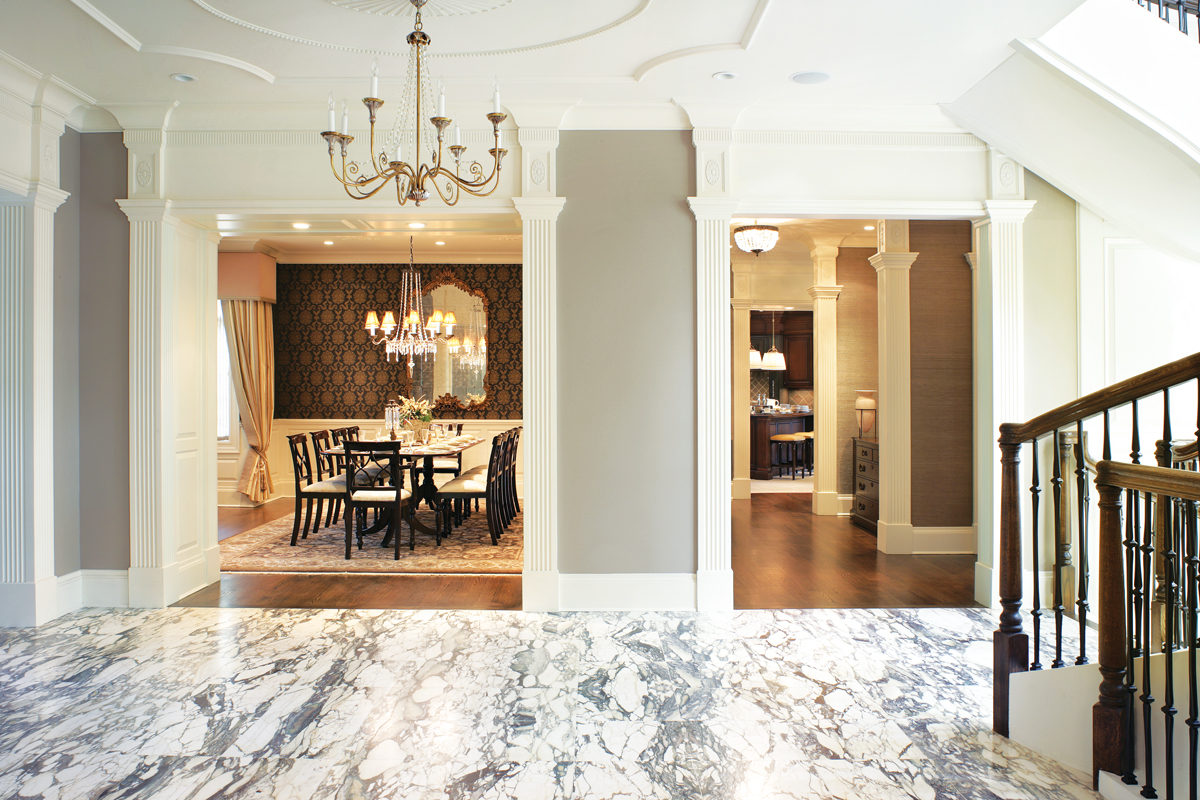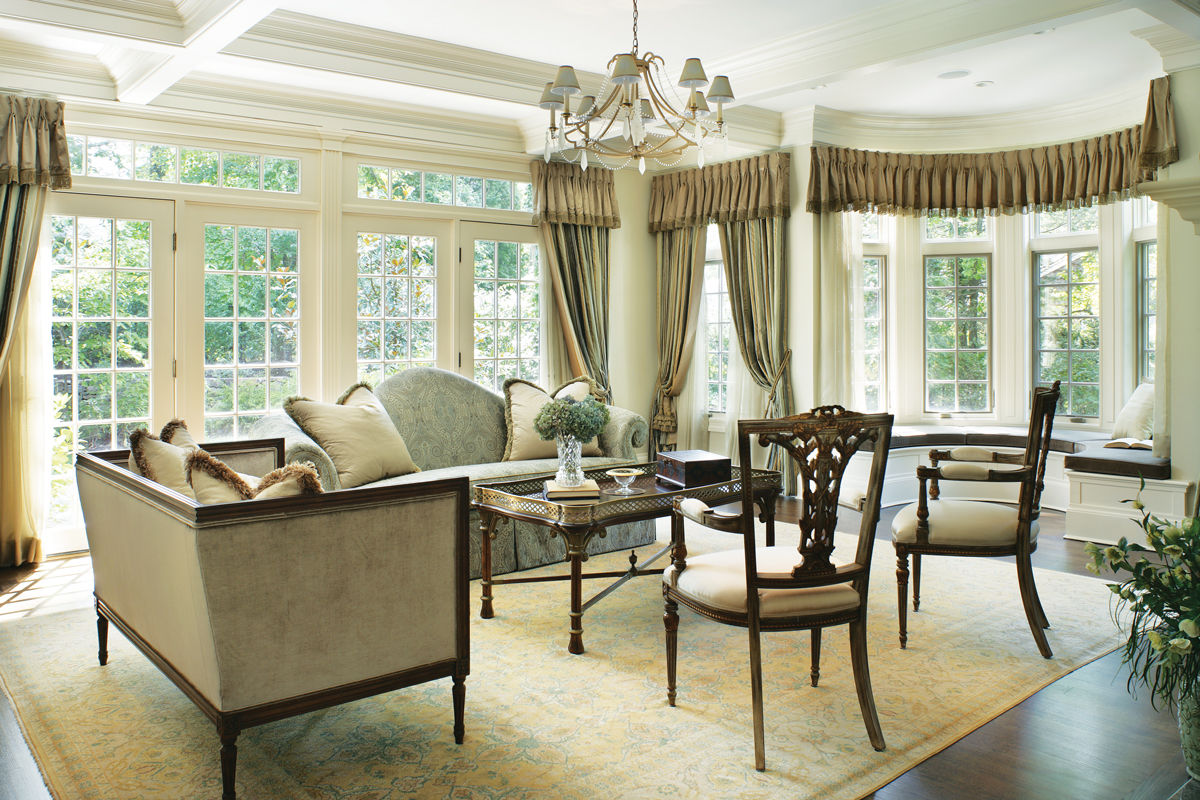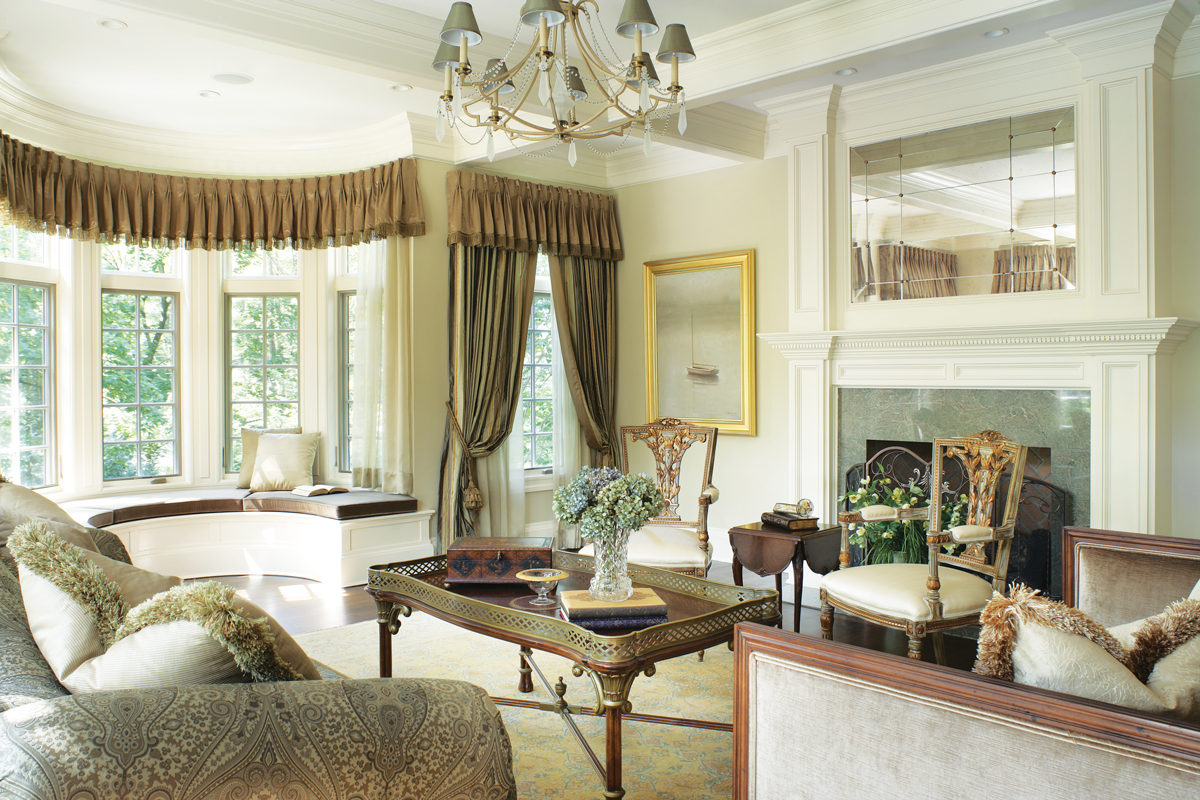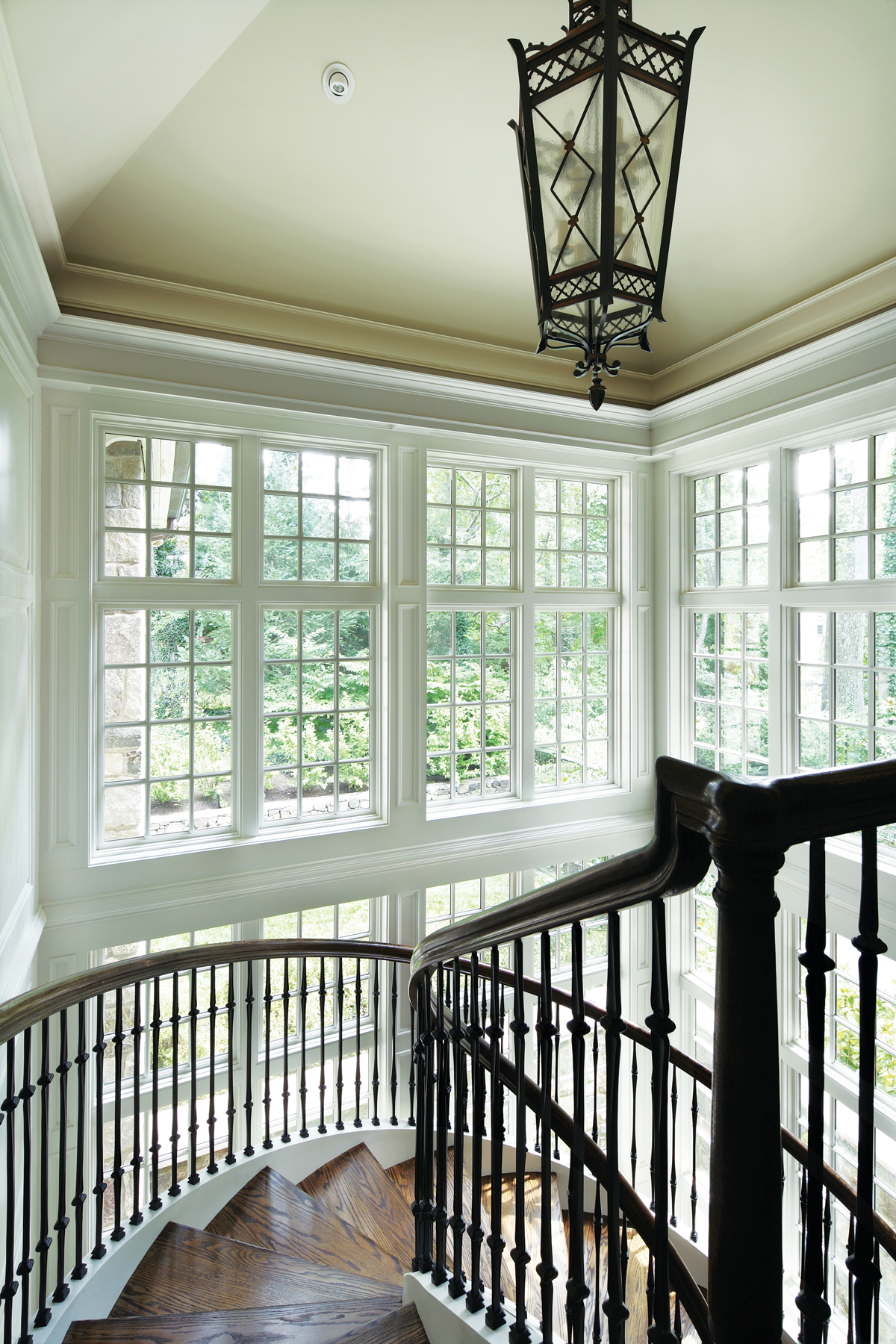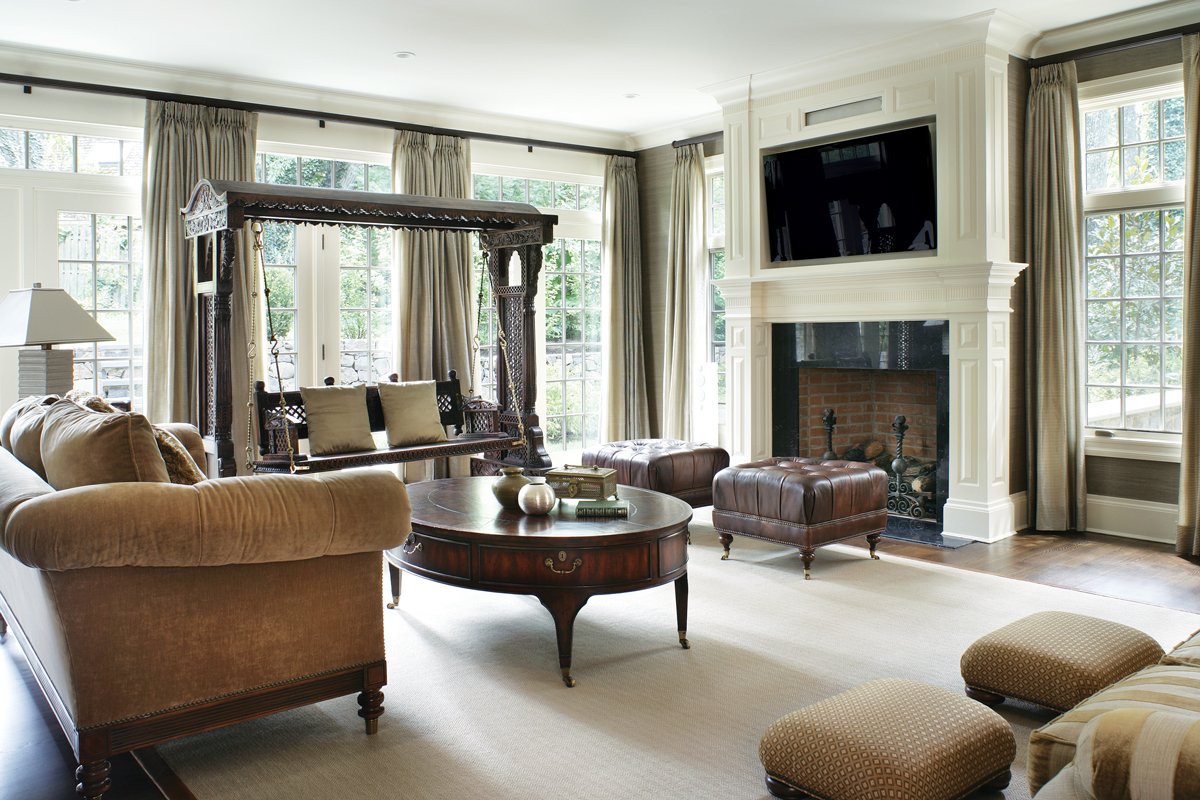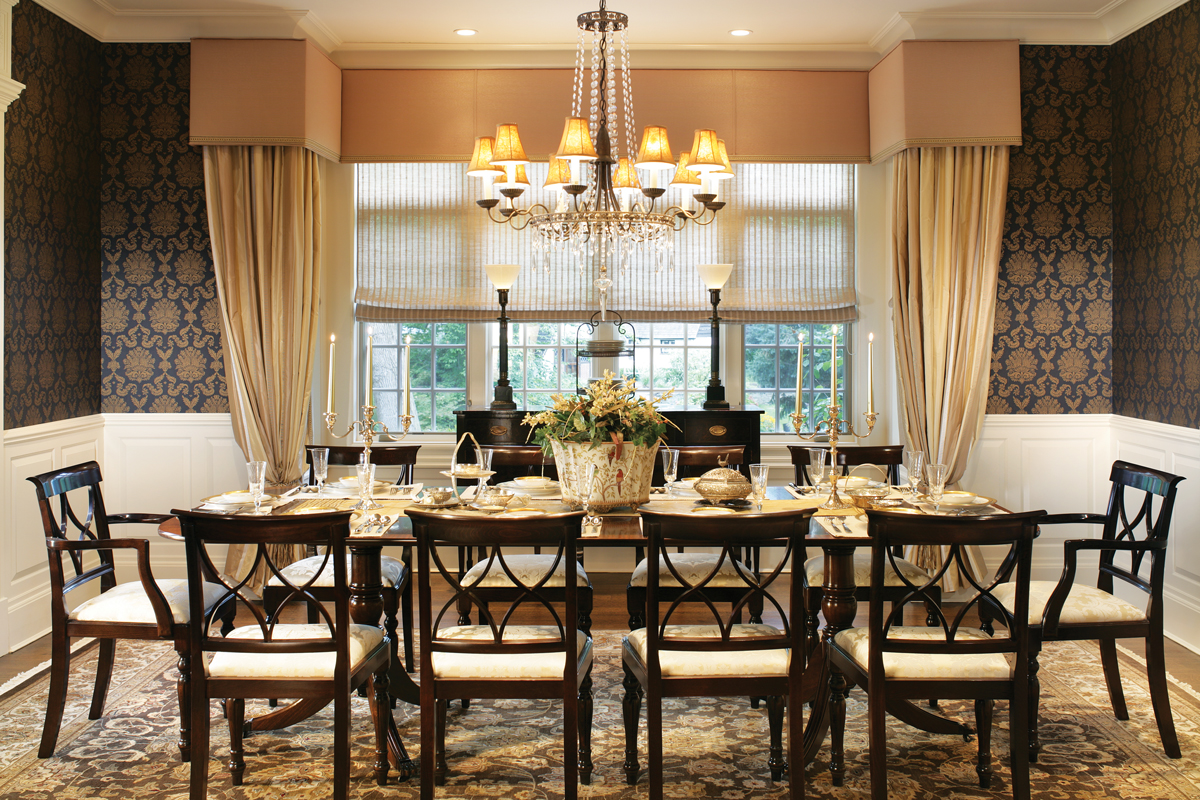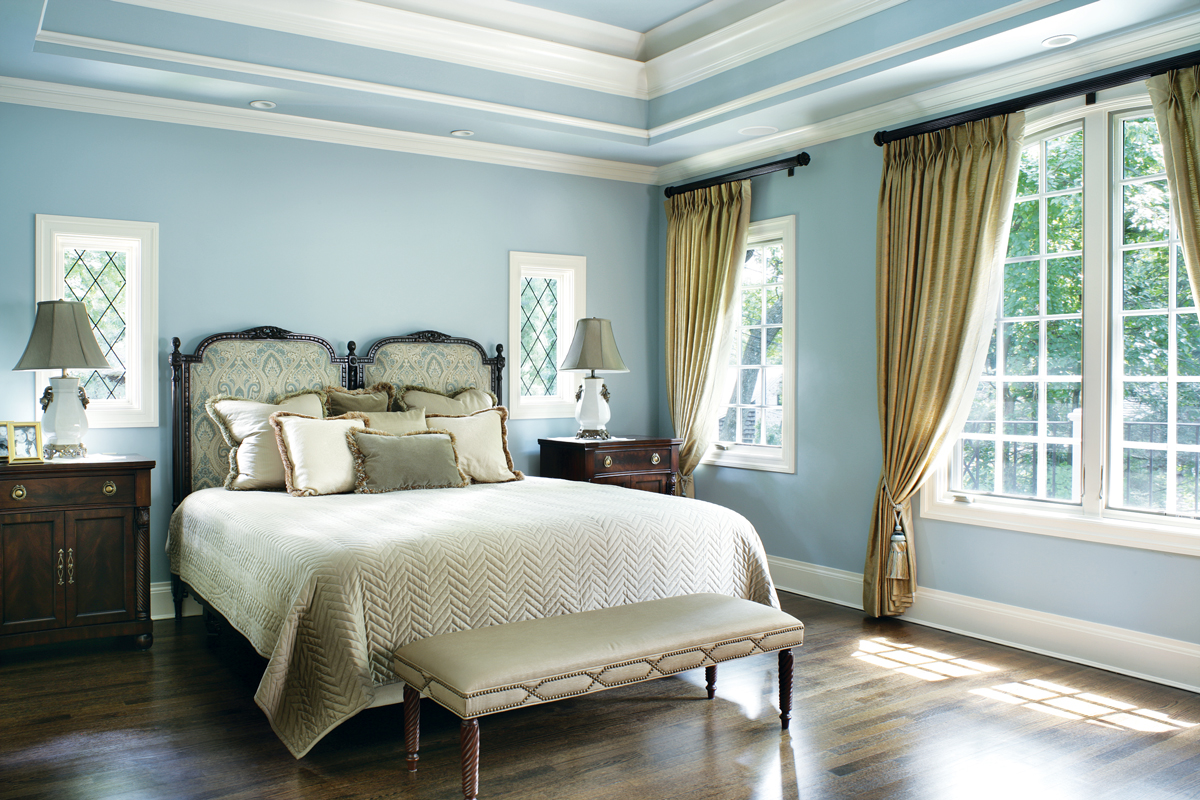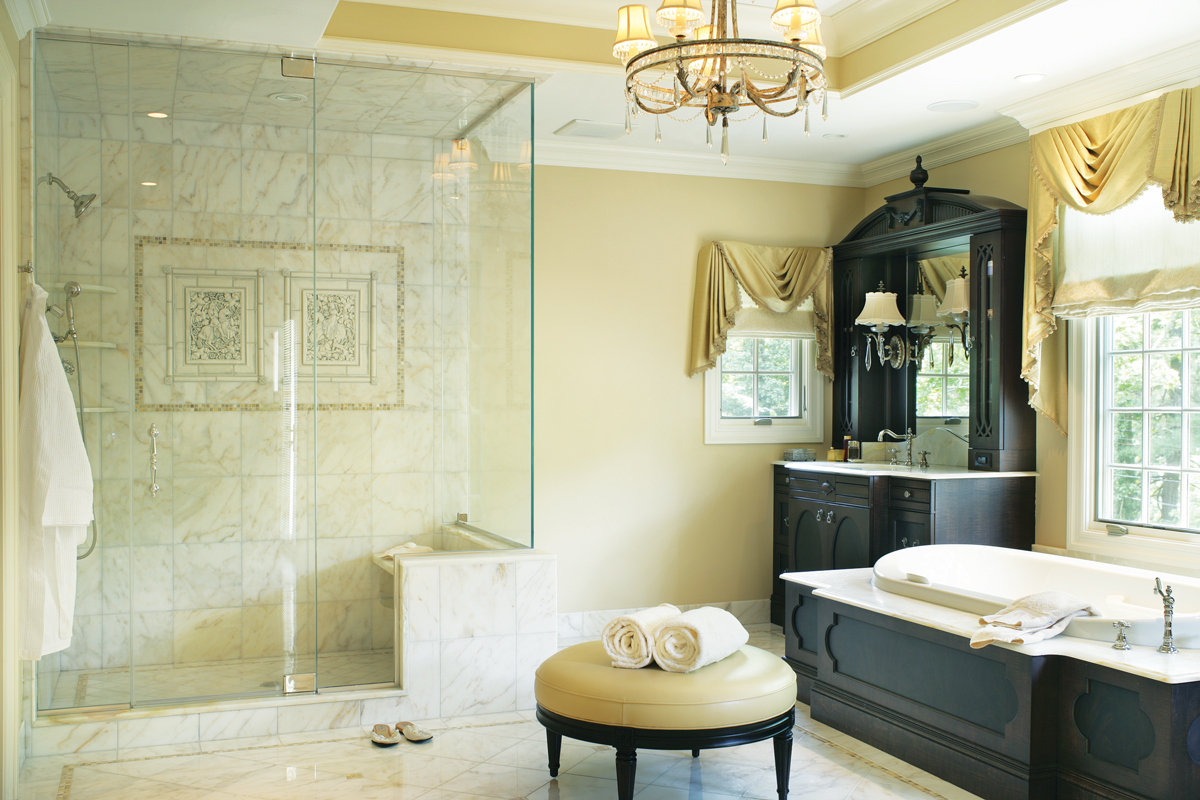Stairway to Elegance
Writer Robin Amster | Photographer Peter Rymwid | Designer Diane Gote | Architect Mendham Design Architects | Builder A. Paragano Group | Location Short Hills, NJIn many ways, this new home is a dream come true for the owners.
A stunning spiral staircase in the foyer of a new Short Hills, New Jersey home is the “crown jewel” in an interior design scheme that combines classical architectural features, English Regency details and traditional style with a nod to today.
Designer Diane Gote says it all adds up to a look of “tailored elegance.” The tailored part of the equation involves restraint. “You can go too far” in layering on traditional elements, says Gote, a state-certified interior designer, fellow of the American Society of Interior Designers and owner of Design Works in Summit, New Jersey. “It’s a subtle demarcation; a pulling back from going overboard.”
Gote’s clients—Drs. Divyang and Renu Parikh—were active participants in the design of their home. Dr. Divyang Parikh says he researched books on design and architecture and “got a more and more clear idea of how I wanted the house to look.”
That look was “English, really a combination of English and Roman/Classical,” he says. Along with Parikh’s input on the furnishings, the extensive molding and architectural detail stems from his vision.
As for the staircase, “I wanted an amazing ‘wow’ factor when you enter the foyer,” Parikh says. The three-story staircase rises from the basement entertainment level to the foyer on the first floor and on to the second floor. It’s surrounded by windows on all three levels. “I wanted the house to be designed so the whole day we would have sunlight coming in through the windows,” he says.
The doctor also wanted an open design. “There is not a single door anywhere on the first floor so when you enter the foyer, the whole house is completely open to you.”
The staircase itself is made of iron balusters, oak treads and an oak handrail. Atop the staircase, Gote placed an iron lantern-type fixture with “a little bit of an English look,” she says. “I needed it to be large enough and narrow enough—I didn’t want it to be meek.”
A highly grained marble floor in the foyer stands up to the distinctive staircase, Gote says. Columns surround the doorways that lead to the dining room and a small hallway that leads to the family room and the kitchen. A pattern of curved molding on the ceiling of the foyer extends to the ceiling of the dining room. Crowning the foyer is a custom chandelier of antique brass and crystal beading. It’s graceful, but not overdone, Gote notes.
In the dining room, the designer covered the walls with an elegant dark gray damask with a muted gold overlay. Drapes with a gold and almond stripe frame the windows. A large mahogany dining table and chairs whose backs have a graceful curved outline evoke traditional English style.
In contrast to the dining room ceiling’s molding, the living room has a coffered ceiling. It sets the stage for a room with a formal though clean and uncluttered look. The furnishings are centered in a conversation grouping in front of the fireplace—one of five in the home. This one has a marble surround, is framed by classical molding and is topped by a leaded mirror with brass studs.
A sofa with a curved back and roll arms is upholstered in a green silk paisley. Contrasting with the curves of the sofa are a loveseat with a wood frame and legs and a high straight back and sides. Chairs with highly carved wood backs are the most formal furnishings in the room, Gote says. French doors topped by transom windows and bay windows surrounding a window seat provide the ample natural light Parikh envisioned—along with views to the greenery outside.
The family room also has French doors and numerous windows. But while the rest of the home’s spaces strike traditional English notes, the family room is meant to reflect the Parikhs’ Indian culture, he says. It’s here that the family spends most of its time, he adds.
The Parikhs made that statement with an intricately carved solid wood swing of the kind found in Indian palaces, usually on the verandah, Parikh says. He commissioned the custom piece from India and had it shipped to the United States in five pieces. “We use it every day; my wife, especially, likes to sit there and relax,” he says.
Completing the more relaxed look of the family room are a comfy deep gold velvet sofa and another sofa with gold and neutral stripes, fronted by muted green/gold footstools. Leather ottomans in front of the fireplace, a round wood cocktail table and a sisal rug add to the comfortable surroundings.
Parikh says he had a dream of building a new home for many years. He and his wife’s house hunting had failed to net anything that “fit into our idea of our home,” he says. “So we just bought the land and decided to build the house.”
Another of Dr. Parikh’s dreams was also realized in the new home.
“I thought that when my daughter gets married I want her to come down that staircase,” Parikh says of the staircase he envisioned for his new home. That was exactly what happened when she subsequently got married at home. “In the real sense, our dream came true,” Parikh says.
Robin Amster, a regular contributor to Design NJ, is a Madison-based writer and editor.

